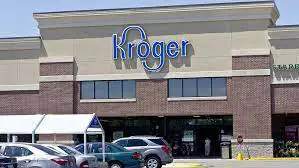
Yes, Kroger does fill propane tanks for exchange. However, the choice between propane exchange and refill has less to do with an option, and more to do with how convincing you are compared with price. What is more affordable: refilling a propane tank or exchanging one? The answer is refilling is more affordable. Let’s know ‘Do Kroger Fill Exchange Propane Tanks?’
Kroger
There are approximately 3,500 stores owned and operated by The Kroger Company or Kroger. It operates supermarkets, multidepartment stores, and convenience stores across the nation.
Cincinnati, Ohio-based Bernard Kroger founded the company in 1883. Over 35 states and the District of Columbia are currently serviced by Kroger Company. A variety of store formats are available, including hypermarkets, supermarkets, superstores, department stores, and jewelry stores.
The largest grocery chain in the United States by revenue, Kroger is the second biggest retailer behind Wal-Mart. Rogers & Company is the seventh-largest employer owned by American citizens in the United States.
According to Kroger, its annual revenue was 122.286 billion dollars in the fiscal year 2020, with earnings of 1.907 billion dollars. Compared with last year’s report, they increased by 0.4%.
What are Propane Tanks?
C3H8 is the molecular formula for propane, a three-carbon alkane. It is a gas at standard temperature, but when compressed to high pressure and the low temperature gets converted to liquid form. It has a molecular mass of 44.1g/mol.
Gases like propane also referred to as liquefied petroleum gas, are the most popular sources of fuel. Propane is a by-product of natural gas.
Its flammable property is similar to natural gas, which is 35060 Fahrenheit. What is different is, you get more energy with the unit of propane than you do with natural gas.
A propane tank is built to accommodate a large amount of liquid propane. The volume typically ranges between 250 gallons and 65,000 gallons. The United States Department of Transportation certifies propane cylinders for use when they contain propane and are designed to be transported. The reason for this is that propane is explosive. Therefore, it’s very important to handle the cylinder according to the prescribed procedures.
- Advantages of Propane Gas:
: 1-It is clean
2-It is environmentally friendly
3-It is affordable
4-Propane is Versatile
5-It is reliable
6-It is abundant
- Disadvantages of Propane Gas:
1-It can cause health problem
2-It has logistical problems
How does a Propane cylinder work?
Gas cylinders have a pressure of up to 2842 kPa, which is too high for most applications. Propane gas cylinders are reduced to a much lower 2.75 kPa working pressure using gas regulators installed on the cylinder outlet valves. Normally, the pressure inside the cylinder is higher than the pressure required to meet domestic requirements, leading to the necessity of using regulators. As propane liquefies under relatively low pressure, propane tanks contain both liquid and gas.
Unlike compressed natural gas, propane cylinders function at low pressure, while CNG cylinders are used at high pressure.
What are PROPANE tanks made of?
Typically, these tanks are constructed from welded steel, aluminum, or composite materials. It is the easiest to fabricate and the cheapest material, making steel by far the most widely used. The weight of cylinders is sometimes reduced by using aluminum or composite materials. With its lightweight, aluminum allows more gas to be transported without exceeding the safe weight limit. A composite cylinder was created recently as a solution to this problem. These are typically fiberglass with a high-impact plastic outer shell. There are some with an inner lining of HDPE and others with an inner lining of thin steel.
The principle under which propane cylinders work is-“Vaporization.” The propane gas vapors are held at the top of the cylinder, and the liquid is accumulated at the bottom. A pressure release causes propane liquid to boil and turn back into gas vapors. Heat causes water to boil faster, melting more rapidly. The more heat you apply, the more quickly it vaporizes.
How much pressure is in a Propane cylinder?
Despite being under pressure as a liquid, propane turns into a gas once you release some pressure. In the propane tank, there is a pressure difference between 152 kPa at 0 degrees and 174 kPa at 540 degrees.
The rate of vaporization in the propane gas cylinder bottle must match the amount of gas that is being drawn from the bottles by the appliances.
Conclusion:
Propane is an environmentally friendly fuel from its pre-combustion state to its post-combustion state. It is non-toxic and does not cause pollution to the environment. Greenhouse gas sources such as natural gas are clean-burning greenhouse gases that reduce emissions of greenhouse gases such as carbon dioxide, nitrogen oxide, and carbon monoxide.
Frequently asked questions:
- Are propane cylinders safe to use?
Yes, propane cylinders are completely safe to use if it is stored under the right condition and pressure.
- Is propane gas toxic?
A low concentration of propane is not toxic to the environment. But higher concentration may be abusive and harmful for the body.


